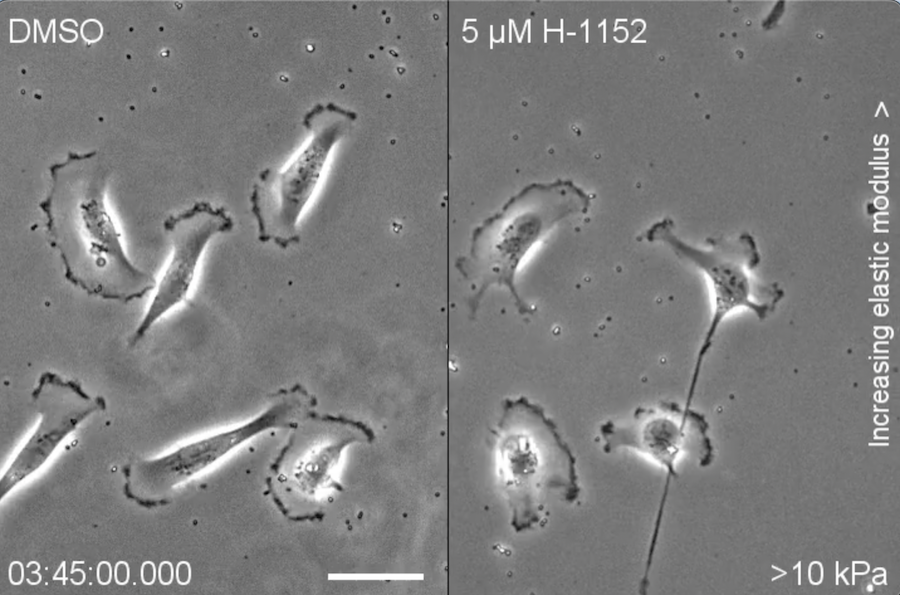Research finds cancer cells can migrate toward certain ‘sweet spot’ environments

July 12, 2022 — Professor David Odde and team have found that cancer cells can gravitate toward certain mechanical “sweet spot” environments, providing new insights into how cancer invades the body. The findings could help scientists and engineers better understand how cancer spreads and could improve future treatments.
The study is published in Nature Materials, a peer-reviewed, multidisciplinary scientific journal.
In a previous study, the University of Minnesota-led team found that cells have the ability to sense the stiffness of their environment—which ranges from stiff (bone tissue) to soft (fatty tissue) to medium stiffness (muscle tissue)—and their ability to move is dependent upon that environment. Their research showed that the cells can have a “sweet spot” of stiffness, that isn’t too hard or too soft, in which they have better traction and can move faster.
Insight into how cancer spreads
In this study, the researchers found that not only does the stiffness of the environment impact the speed at which cells move, but it also affects the direction in which they move.
For many years, scientists have thought that cells would always gravitate toward a stiffer environment, but the University of Minnesota researchers observed for the first time that cells can actually move toward a “sweet spot” that’s more in the middle.
“This discovery challenges the current thinking in the field, which is that cells only move toward stiffer environments,” said David Odde, a professor in the University of Minnesota Twin Cities Department of Biomedical Engineering and senior author of the study. “I think that this finding will change how people think about this phenomenon. Our mathematical model predicted, and we’ve shown through experiments, that cells actually can move toward the softer side.”